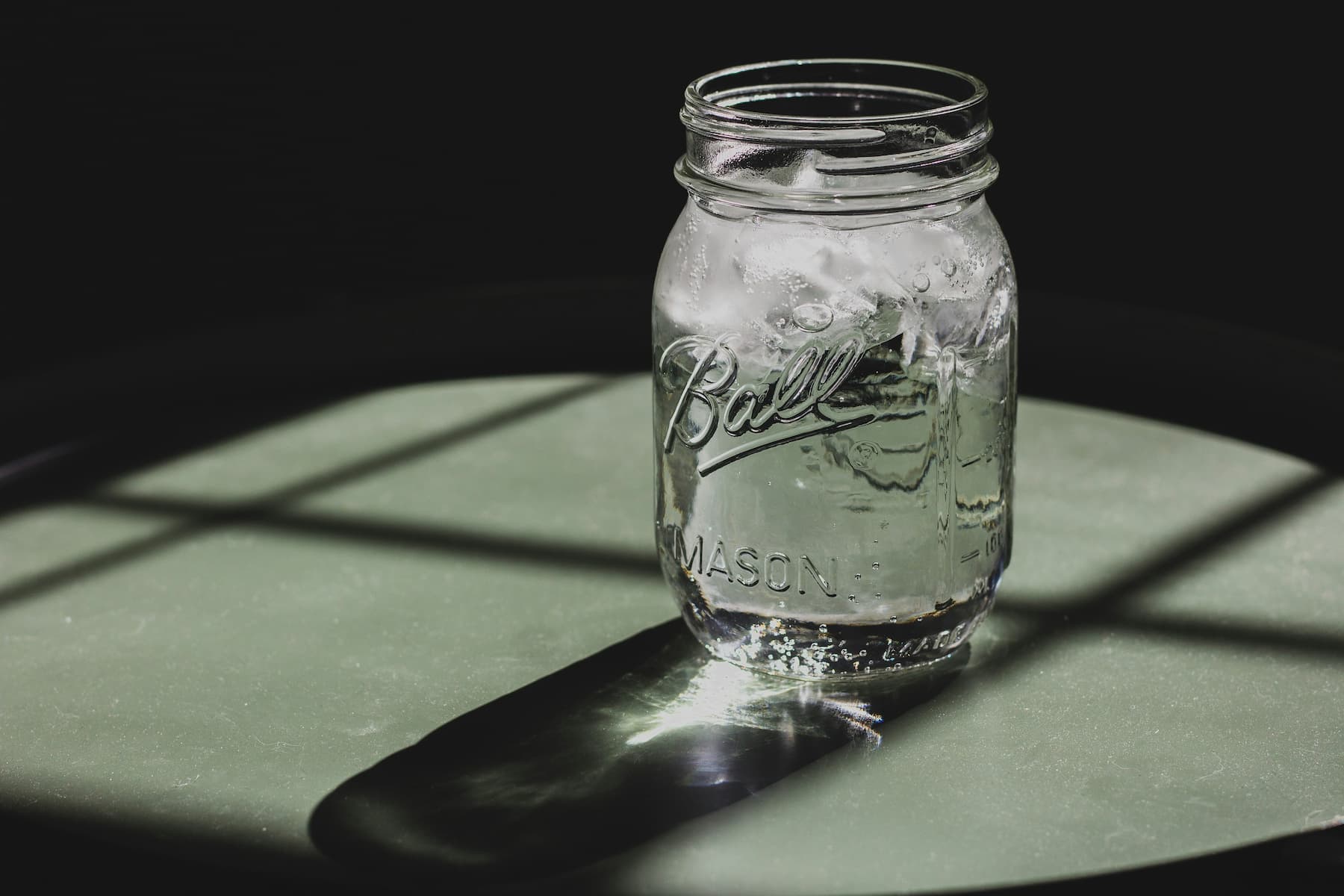The humble mason jar has long reigned supreme in the world of pantry organization. Its classic silhouette has graced countless kitchen shelves, Pinterest boards, and Instagram posts. But while we’ll always appreciate this time-tested storage solution, today’s innovative designers are pushing the boundaries of food storage into exciting new territory – creating options that are not just functional but genuinely beautiful additions to our homes.
In this exploration of next-generation food storage, we’ll look at designs that merge cutting-edge technology, sustainable materials, and thoughtful aesthetics to transform how we preserve, present, and interact with our food.
The Evolution of Food Storage Design
Food storage design has always reflected broader cultural shifts – from Depression-era glass containers that made food visible when scarcity was a concern, to colorful plastic Tupperware that symbolized mid-century America’s embrace of convenience and modernity.
Today’s innovations respond to contemporary values: sustainability, visual appeal, space efficiency, and a return to mindful food practices. The best new designs don’t just store food; they enhance our relationship with it.
Modular Systems: Creating Visual Harmony
Stackable Ceramic Storage by Rigby Home
One of the most exciting developments in food storage is the rise of modular ceramic systems. Rigby Home‘s collection of stackable ceramic containers with wooden lids stands out for its elegant simplicity and thoughtful functionality.
Unlike traditional canisters that come in predetermined sizes, these modular designs work as a cohesive system. Each container stacks perfectly with others in the line, creating a visually harmonious arrangement regardless of how many pieces you own.
The containers feature:
- Airtight silicone seals integrated into beautiful wooden lids
- Subtle matte glazes in earthy tones that complement any kitchen aesthetic
- Stackable designs that maximize vertical space
- Dishwasher-safe components for practical maintenance
The genius of these systems is how they transform necessity into a design feature. Your ingredients become part of your kitchen’s visual landscape rather than items to hide away.
Inka’s Gradient Collection
Taking the modular concept further, Inka has introduced a gradient collection where containers subtly shift in color from one to the next. When arranged together, they create a beautiful ombré effect that turns your pantry shelf into an intentional color story.
This approach treats food storage as an opportunity for visual expression, elevating the everyday act of organization into something approaching art.
Smart Materials: Function Meets Sustainability
Apiary’s Beeswax Food Wraps
Moving beyond rigid containers, Apiary has reimagined food wraps with their hand-printed beeswax cloths. These flexible covers conform to various shapes, replacing single-use plastic wrap with a sustainable alternative that adds visual interest to your refrigerator.
The designs range from subtle botanical prints to bold geometric patterns, turning leftovers into attractively wrapped packages. The natural antibacterial properties of beeswax help preserve food while the breathable nature of the fabric creates ideal storage conditions for many foods.
Etee’s Plastic-Free Pouches
Another groundbreaking alternative comes from Etee, whose plant-based, compostable pouches provide the convenience of zip-top bags without the environmental impact. These translucent pouches maintain the visibility that makes plastic bags useful while eliminating the petroleum products.
What makes these particularly noteworthy is their aesthetic appeal—soft, slightly textured surfaces with minimal, elegant branding that wouldn’t look out of place on open shelving.
Reimagining Glass: Beyond the Mason Jar
IKEA’s 365+ Glass Series with Bamboo Lids
While glass remains a perennial favorite for food storage, designers are finding ways to refine and elevate this classic material. IKEA’s 365+ series with bamboo lids demonstrates how thoughtful material combinations can transform basic glass containers.
The contrast between clear glass and warm bamboo creates visual interest while offering practical benefits—the wood provides a gentler sound when closing containers and maintains a better seal over time than plastic alternatives.
Hawkins New York’s Sculptural Glass Storage
For those seeking true statement pieces, Hawkins New York offers hand-blown glass storage vessels that function as both container and sculpture. Their organic forms and subtle color variations make them worthy of display even when empty.
These pieces challenge the notion that utility and beauty must be separate considerations, proving that even the most functional items in our homes can be objects of genuine artistic merit.
Space-Optimizing Innovations
Stasher’s Architectural Stand-Up Bags
Addressing the common problem of floppy storage bags, Stasher has created silicone pouches with flat bottoms that stand upright when filled. Available in soft, sophisticated colors, these reusable bags create clean lines in the refrigerator or pantry.
Their architectural quality transforms what would typically be chaotic drawer contents into an organized system that’s aesthetically pleasing when visible on shelves or in transparent refrigerator drawers.
Joseph Joseph’s Nested Storage
Joseph Joseph has taken space optimization to new heights with their nested storage systems. Unlike traditional container sets where lids and containers create disorganized piles, these sets are engineered to fit together precisely when not in use, taking up minimal cabinet space.
What makes these particularly innovative is the thoughtful color coding that helps users quickly identify matching lids and containers—proving that good design solves problems while adding visual appeal.
Revitalizing Traditional Materials
East Fork Pottery’s Fermentation Crocks
In a beautiful marriage of ancient techniques and contemporary design, East Fork Pottery has created stoneware fermentation crocks that honor traditional food preservation methods while fitting seamlessly into modern kitchens.
These vessels feature:
- Water-sealed rims that allow gases to escape during fermentation
- Weights designed specifically for keeping vegetables submerged
- Glazes formulated to withstand acidic environments
- Forms that reference historical pottery while incorporating modern functional improvements
The result is a storage solution that encourages traditional food practices while serving as a sculptural element in contemporary kitchens.
Farmhouse Pottery’s Butter Keepers
Similarly, Farmhouse Pottery has reimagined the French butter keeper—a traditional design that stores butter without refrigeration by creating a water seal. Their version maintains the functional aspects of this clever design while updating the aesthetics with clean lines and sophisticated glazes.
These pieces exemplify how designers can honor historical innovations while adapting them for contemporary sensibilities.
The Future of Food Storage
As we look to the future, several exciting directions are emerging in food storage design:
Responsive Materials
Designers are beginning to work with materials that change appearance in response to food conditions. Imagine containers that subtly change color when contents are reaching the end of their freshness, or lids that indicate when fermentation processes have reached optimal stages.
Integration with Smart Home Systems
We’re seeing the first generation of storage solutions that connect with home management systems—containers that track contents, monitor freshness, and even generate shopping lists when supplies run low.
Customization and Personalization
3D printing and other technologies are making it possible to create storage solutions specific to individual needs—custom-sized containers for particular spaces, or systems designed around specific dietary practices.
Creating Your Own Elevated Pantry
Ready to move beyond basic storage solutions? Here are some tips for transforming your own food storage:
- Think in systems rather than individual containers – Choose collections that work together visually and functionally
- Consider your ingredients as part of your decor – Beautiful foods deserve beautiful vessels
- Invest in quality pieces for frequently used items – Daily interaction justifies higher-quality materials and thoughtful design
- Mix materials thoughtfully – Combine glass, ceramic, wood, and textile storage for visual interest and appropriate functionality
- Don’t feel obligated to replace everything at once – Build a collection gradually, focusing on items that bring you joy
Conclusion: Storage as Experience
The most exciting aspect of these new storage solutions is how they transform the experience of cooking and eating. When ingredients are stored in vessels that honor their importance, cooking becomes more intentional. When leftovers are wrapped beautifully, we’re more likely to use them rather than forget them.
As we continue to reconsider our relationship with consumption and material goods, these thoughtfully designed storage options remind us that utility and beauty are not opposing values but complementary aspects of well-designed objects. The mason jar will always have its place, but it’s exciting to see designers expanding our options with solutions that better reflect our contemporary values, spaces, and aesthetics.
What innovative food storage solutions have you discovered? Share your favorites in the comments below!

